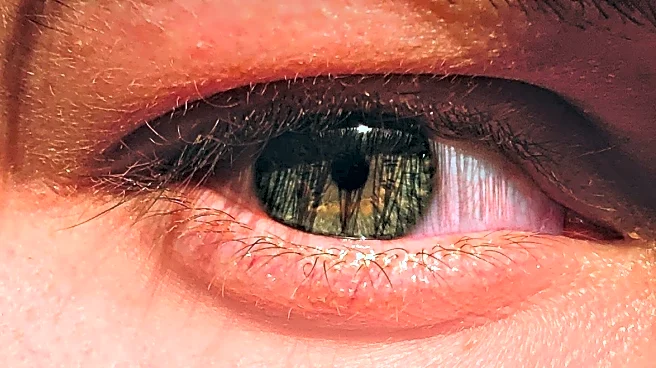What's Happening?
Researchers at the University of Rochester have developed a novel treatment using intravitreal Bevacizumab nanoparticles to address retinal vasculopathy in a mouse model of retinopathy of prematurity (ROP).
The study involved exposing newborn mice to high oxygen levels to induce retinopathy, followed by treatment with Bevacizumab-loaded nanoparticles. The nanoparticles were synthesized using a double emulsion-solvent evaporation method, optimized for size and drug release. The treatment aimed to reduce retinal artery tortuosity and vein dilation, common symptoms of ROP. The study demonstrated that the nanoparticles effectively ameliorated these symptoms, suggesting potential for clinical application.
Why It's Important?
Retinopathy of prematurity is a significant cause of vision impairment in premature infants, and current treatments have limitations. The development of Bevacizumab nanoparticles offers a targeted and sustained release of medication, potentially improving treatment outcomes. This approach could reduce the frequency of injections required, minimizing discomfort and risk for patients. The study's findings could pave the way for new therapeutic strategies in managing ROP and other retinal diseases, potentially improving quality of life for affected individuals and reducing healthcare costs associated with long-term vision impairment.
What's Next?
Further research is needed to validate the efficacy and safety of Bevacizumab nanoparticles in human subjects. Clinical trials will be essential to determine optimal dosing and administration protocols. If successful, this treatment could be integrated into standard care practices for ROP, offering a more effective and less invasive option for managing the condition. Additionally, the technology could be adapted for other ocular diseases, expanding its impact on ophthalmic care.












